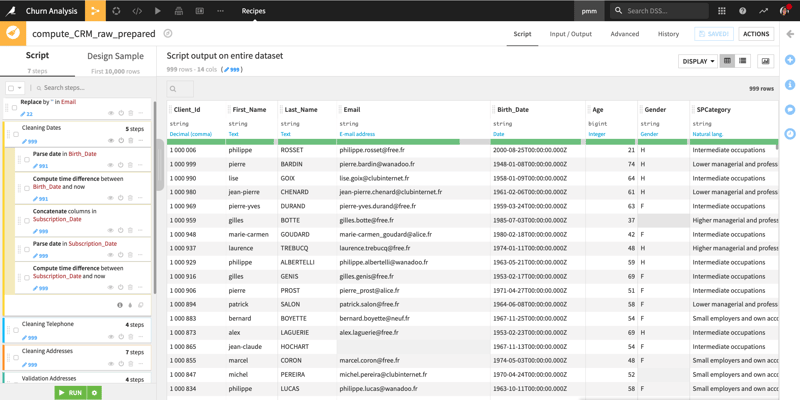Imagine building a treehouse with a pile of random lumber, bolts, and screws. Before we can build, we need to organize our materials. Similarly, data needs to be prepared before it can be used for analysis, models, and reports. This is even more true when the size of the data is more comparable to a high-rise building than a treehouse project.
It is important to understand the data preparation process, how it is used in data projects, and how improving the process enables data analysts to spend time on higher value work.

What Is Data Preparation?
Data preparation is the work done to take raw data and organize it to be analyzed. This can be difficult and time consuming. Surveys show that over 60% of a data scientist’s job is data preparation, which is a necessary step before the data can be analyzed and be useful for your team.
The Process
The data preparation process looks different depending on a company’s needs. A common process is:
- Gathering – Accessing and blending data from necessary data sources such as databases and manually collected data. This step could include deleting columns or adjusting naming conventions.
- Cleaning – Finding patterns and outliers in the data. If there are duplicates or errors, they are removed or corrected at this step.
- Aggregating – Compiling and summarizing data. This process involves calculations to summarize data that is too granular. Data is grouped in a logical way to reveal traits within the dataset.
- Structuring – Structuring the data to the team’s needs. This step organizes and reshapes the data into a format that is easily accessible and useful for business reporting.
- Exploring – Uncovering characteristics and patterns within the data. Sometimes called data mining, this work helps to determine if our data set can really answer the questions the data project started with.
Historically, companies have done data preparation manually with spreadsheets, with Python, or using other data manipulation tools. Companies looking for a competitive edge use semi-automated or fully automated data preparation and data analysis tools such as Dataiku.
How Is Data Preparation Used in Data Projects?
The work of gathering, cleaning, and aggregating enriches and improves the integrity of raw data. This part of the data preparation process allows organizations to trust the analysis performed utilizing well-prepared datasets. Structuring and exploring makes data useful, accessible, and provides early insights about a dataset. This improves analysis work and expands usefulness throughout an organization.
A common challenge teams face in data preparation is that cleaning data manually is error prone and may lack an audit trail. Writing scripts may reduce error, but this solution lacks flexibility and broad organizational use. Using a visual data flow helps analysts clean and aggregate data while creating visibility across teams, which makes the data preparation process flexible for changing datasets. A visual flow should be readable and accessible by many employees, from analysts to data experts to business SMEs, to ensure easy communication across teams.
Large datasets bring additional challenges to data preparation. Traditional data preparation tools require interaction with the entire dataset, but this is often slow and can cause data corruption. Using software with data connectors allows analysts to work with a sample of the large dataset to create a recipe which can be applied later to the entire dataset. Visual data preparation recipes can automate recurring transformations and data preparation tasks. This automation creates efficiencies in the data preparation process that allow analysts to create faster, more relevant insights for the business.
Building an optimized data preparation workflow allows organizations to trust the analysis performed utilizing well-prepared and current datasets.
What Value Can Better Data Preparation Processes Mean for Your Business?
Data preparation is the behind the scenes work essential to quality data analysis and reporting. Like a theater production, the behind the scenes efforts of data preparation are rarely visible to the recipients of the reports. However, teams that recognize the value of investing in the data preparation process provide reporting that is more accurate, trustworthy, and valuable.
Collaboration is much easier with data preparation software as your entire organization can work and access information in the same place. This prevents duplicated work and allows stakeholders to gain insights. Furthermore, data preparation platforms make the process faster by automating recurring data prep tasks. This enables teams to spend time on higher value work.
Data preparation is an essential part of an analyst's work that allows teams to have confidence in their data and its value to the company. Data preparation instills trust in models that generate metrics and reports. Improved data preparation processes ultimately allow important business decisions to be made faster and easier.





